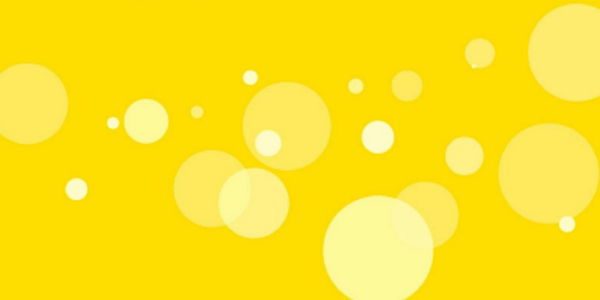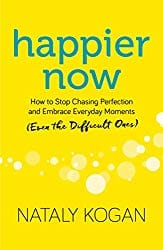
 Happier Now: How to Stop Chasing Perfection and Embrace Everyday Moments (Even the Difficult Ones), by Nataly Kogan
Happier Now: How to Stop Chasing Perfection and Embrace Everyday Moments (Even the Difficult Ones), by Nataly Kogan
Sounds True, 9781683641100, 227 pp., 2018
I confess to not being a fan of most self-help books, but I chose to read Happier Now: How to Stop Chasing Perfection and Embrace Everyday Moments (Even the Difficult Ones), not because of what it promised to deliver but because of its author.
I first heard of Nataly Kogan when her app, Happier, came out several years ago. I loved the idea of a platform that had the sole purpose of tracking the little happy moments I encounter every day. I downloaded it early on and became a regular user for about a year. Kogan was not only the creator of the app, she also was a very active user. I remember seeing Kogan’s posts on Happier, and thinking that everything in her world seemed — well, great.
When I first heard about this book, I was a little puzzled. Why would someone who seemed as happy and successful as she did on her app need further help learning how to be happy? It was not until I began to read Happier Now that I learned that while she appeared to be at the height of success and to have it all, she was actually experiencing crushing self-doubt, depression, and near-crippling stress that would take her to her breaking point.
A self-help book with a heavy dose of memoir, Happier Now begins with the story of Kogan’s life as a young teen refugee fleeing the former Soviet Union with her family. She openly shares the fears, unease, and discomfort, not only as a refugee, but also a teenager with all the angst, anxiety, and uncertainty that goes along with entering puberty.
She relates how she studied Sam, from the 1980’s sitcom Who’s the Boss, so she could learn to speak English without an accent. Kogan wanted nothing more than any other American teenager wanted — to fit in — and she became convinced that once she did, she’d find everlasting happiness, and all would be well. She did learn to speak English in the manner she desired, but everlasting happiness was not the result. And this is the focus of the book: happiness is not something we achieve.
Hogan writes, “Happiness does not arise from making everything in our lives perfect. It comes from embracing life as it is and finding small moments of gratitude, joy, kindness, beauty, and human connection within it,” even when things are not going so great.1
Happier Now isn’t about learning how to live a life in which you are happy all the time without pain, sadness, or struggle. Instead, it is a guide to learning resilience, self-acceptance, and to be present no matter what it is you are experiencing.
Kogan’s writing style is easy to read, and very relatable. My story is very different than hers, but in reading her experiences as a teenager new to the United States, I was able to recall the feelings I had at that same time in my life. How I wanted to fit in, to be liked, and thinking that if I just got the right clothes, or the right hairstyle, I’d surely be happy. I felt as though I was reading the writing of a close friend. There is an incredible openness to her writing, as she does not shy away from sharing her deepest fears and struggles as a businesswoman, a spouse, a parent, a friend, and so on, which creates a feeling of kinship. I felt relieved that I was not the only person in the world who feels lost from time to time, even in times of great success.
The book is broken into two parts. The first part, “The Journey to Happier,” has four chapters, and it chronicles her journey from childhood to the launching of her app, Happier, and her initial recognition that things were not ok in her world. The second part, “Your Daily Anchors for Becoming Happier Now,” tells the story of how she turned things around after reaching her breaking point, and she shares of the tools she used to do it.
Each story concludes with a journal exercise. These range from simple questions meant to help the reader explore their current views on happiness, to making commitments to daily practices that are intended to help build the sense of resilience and self-acceptance that Kogan states are essential parts of being happier now. I found the exercises easy to do and not very time-consuming. I did not do all of them, but I did get something out of each one I completed, and came away with some new tools to help me develop my own “happier now” practice.
The final chapter is about doing the work to build a happier life, which she stresses is an ongoing practice, and how it helps to create a happier world. In learning to be compassionate towards ourselves, we begin to be compassionate towards others, and by sharing when we are not ok, we not only build connection, but help others to feel it is alright to share their struggles too. The book concludes with a moving letter to her daughter that contains 40 life lessons she learned in her first 40 years of life. The list has a greater impact after reading Kogan’s story, and knowing what it took to get her to the place of writing it.
Kogan herself is what makes Happier Now such a great book. Not once did I feel like I was being talked at or down to by a so-called expert. She freely expresses her own initial doubts about many of the practices that she shares, as well has how the same practices helped her create a better way of being in the world. Kogan comes across as very human, full of flaws, and as prone to making mistakes as you or I. It is the very humanness of her story that makes even a self-help skeptic like me recommend this book for anyone who wants to begin the journey of personal healing.
- p. xix [↩]








